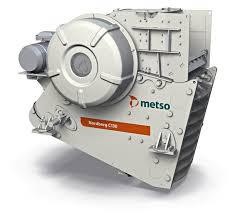Spare parts and wear shields are available in our stocks.
Quick Access: +905426661111
A mobile crusher plant is a compact, transportable crushing and screening system designed to process hard materials such as rocks, stones, concrete, and asphalt into smaller, reusable aggregate forms. Unlike stationary crushing plants, mobile crusher plants offer the flexibility to be easily moved and rapidly deployed at different work sites. This translates into significant savings in time and operational costs.
Typically, a mobile crusher plant includes components such as a feed hopper, crusher (jaw, impact, or cone type), screening unit, conveyor belts, an automation system, and sometimes a built-in generator. The raw material is fed into the hopper using loaders or excavators. The material is then transferred to the crusher, where it is crushed into smaller sizes. Afterward, it passes through a screening unit to separate it by size. Oversized material may be redirected to the crusher for reprocessing.
These plants are widely used in construction projects, road and highway developments, mining operations, quarrying, demolition work, and recycling facilities. They are especially effective in emergency applications such as post-disaster clean-ups. Their efficiency, mobility, environmental friendliness, and low maintenance requirements make them a vital part of modern infrastructure and mining projects.
What Is a Mobile Primary Impact Crusher, What Is It Used For, How Does It Work, and Where Is It Used?
A mobile primary impact crusher is a portable crushing unit used in the initial stage of material reduction. It works using powerful impact energy to break down large materials such as stones, concrete, and asphalt. The term “primary” indicates that it is the first crushing machine in the processing sequence, preparing material for secondary or tertiary crushers.
Impact crushers operate through a high-speed rotor that spins and projects material into stationary breaker plates. In a mobile primary impact crusher, large chunks of material are fed into the unit. The rotating rotor throws the material against the internal walls of the crusher, creating repeated impacts until the material reaches the desired size. Once crushed, the material is screened and sorted by size.
This type of crusher is ideal for handling medium-hard materials with low abrasiveness such as limestone, asphalt, and construction debris. Common applications include construction waste recycling, quarrying, road building, and mining. Its mobile configuration allows it to be transported quickly between job sites, making it a highly efficient and versatile piece of equipment.
 English
English
 Le français
Le français
 Türkçe
Türkçe
